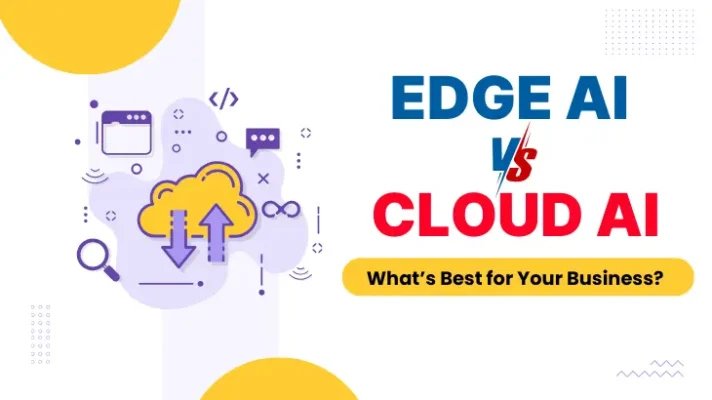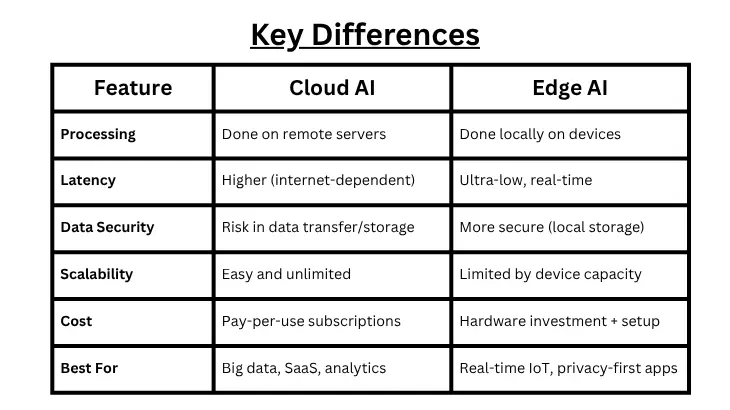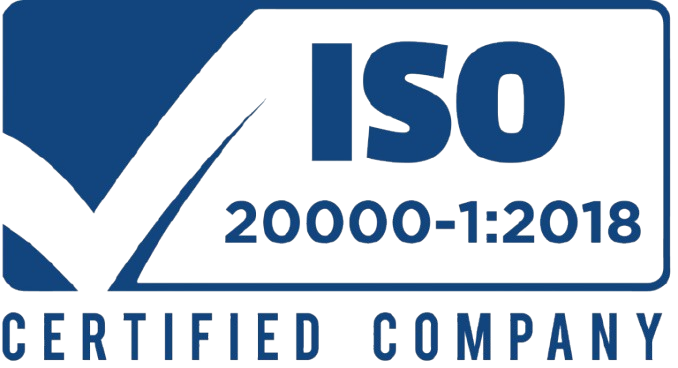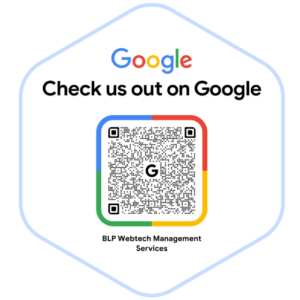
Introduction
Artificial Intelligence (AI) is no longer a futuristic concept; it’s already driving growth across industries. From personalised shopping recommendations to real-time medical diagnostics, businesses everywhere are adopting AI solutions to stay competitive. But when it comes to choosing the right infrastructure, most companies face a critical question: Should we rely on Cloud AI or Edge AI?
Both technologies offer powerful capabilities, but they solve different types of problems. Choosing the wrong one could mean wasted investment, poor performance, or even security risks. In this blog, we’ll break down the differences between Edge AI and Cloud AI, highlight their strengths and weaknesses, and help you decide which is best for your business.
What is Cloud AI?
Cloud AI refers to artificial intelligence applications that run on remote servers hosted by providers such as Google Cloud AI, AWS AI, Microsoft Azure AI, or IBM Watson. Businesses connect to these platforms via the internet and use their advanced computing power to train, deploy, and run AI models.
Benefits of Cloud AI:
- Scalability: Cloud platforms handle massive data loads without worrying about local hardware.
- High Performance: Complex tasks like natural language processing, big data analytics, or predictive modeling can be done with ease.
- Easy Updates: Models and services are updated regularly by the provider.
- Cost Efficiency: Businesses pay for usage instead of heavy upfront infrastructure.
Common Use Cases:
- Marketing and customer analytics
- Fraud detection in finance
- AI-powered chatbots and SaaS platforms
- Content personalization (e.g., Netflix recommendations)
Cloud AI is best when businesses need to process large volumes of data or rely on complex algorithms that require heavy computing power.
What is Edge AI?
Edge AI refers to AI computations that take place directly on local devices (edge devices) such as smartphones, IoT sensors, industrial robots, or self-driving cars. Instead of sending all data to the cloud, decisions are made instantly on the device itself.
Benefits of Edge AI:
- Low Latency: Real-time processing with almost zero delay.
- Data Privacy: Sensitive data stays on the device, reducing risks.
- Offline Functionality: Works even without an internet connection.
- Efficiency: Reduces dependency on external servers and bandwidth.
Common Use Cases:
- Healthcare wearables (heart monitoring, glucose trackers)
- Self-driving vehicles (instant navigation decisions)
- Smart retail checkouts and kiosks
- Industrial IoT (real-time machine monitoring)
Edge AI is best when real-time decision-making or data privacy is a priority.

Problems Businesses Face When Choosing
Many businesses struggle to make the right decision because of these challenges:
- Cost Confusion: Cloud seems cheaper upfront, but long-term subscription costs add up. Edge requires hardware investments.
- Security Concerns: Industries like healthcare and finance must balance compliance (HIPAA, GDPR) with usability.
- Performance Needs: Some tasks can tolerate a delay (e.g., analytics), while others demand instant responses (e.g., autonomous driving).
- Infrastructure Barriers: Businesses with poor connectivity can’t rely only on cloud-based AI.
Which One is Right for Your Business?
Choose Cloud AI if…
- Your business runs analytics-heavy applications.
- You need scalability and flexibility for unpredictable workloads.
- Your priority is cost-saving in infrastructure.
- Examples: SaaS platforms, financial data analytics, e-commerce personalization.
Choose Edge AI if…
- Your business requires real-time decisions (milliseconds matter).
- You handle sensitive or regulated data (healthcare, defense, finance).
- Internet reliability is a challenge.
- Examples: Smart manufacturing, healthcare wearables, autonomous vehicles.
Consider a Hybrid Approach
Many companies now combine both. For example:
- Healthcare: Patient monitoring (Edge AI) + large-scale medical record analysis (Cloud AI).
- Retail: Smart in-store sensors (Edge AI) + central analytics for customer behavior (Cloud AI).
This hybrid approach offers the best of both worlds real-time decision-making with the analytical power of the cloud.
Real-World Examples
- Cloud AI: Netflix uses cloud AI to personalize recommendations for millions of users worldwide.
- Edge AI: Tesla’s self-driving cars rely heavily on Edge AI to make real-time driving decisions.
- Hybrid AI: In healthcare, wearable devices track patient vitals in real-time (Edge) while doctors access detailed reports and predictive insights via cloud AI.
These examples show that the choice depends on the nature of operations and business goals.
How to Decide for Your Business
If you’re unsure, here’s a step-by-step method:
- Define Your Business Goals – Do you need analytics at scale or instant decisions?
- Analyze Your Data – Is your data sensitive or can it be stored in the cloud?
- Set a Budget – Compare long-term cloud subscriptions with hardware investments.
- Check Infrastructure – Evaluate internet speed, device capability, and compliance needs.
- Run a Pilot Project – Start small with a test case to measure ROI before scaling up.
By following these steps, businesses can make a more informed and cost-effective decision.
Conclusion
The debate of Edge AI vs Cloud AI doesn’t have a single winner it all depends on your business priorities. If your goal is real-time performance and privacy, Edge AI is the way forward. If you need scalability and advanced analytics, Cloud AI is a smarter choice. For many businesses, the hybrid model is emerging as the most practical solution.
The key is to start small, test both approaches, and gradually scale based on measurable results. With AI evolving rapidly, companies that adopt the right strategy today will have a strong competitive advantage tomorrow.
FAQs
Q1: Is Edge AI more expensive than Cloud AI?
Not necessarily. Edge AI requires upfront investment in hardware, but Cloud AI comes with recurring subscription costs. Over time, the total cost depends on usage and scale.
Q2: Can small businesses use Edge AI?
Yes. Many affordable devices and AI chips are now available, making Edge AI accessible to startups and small companies, especially in retail, logistics, and healthcare.
Q3: What are the main risks of Cloud AI?
The biggest risks include data privacy concerns, latency issues, and vendor lock-in. Businesses should evaluate compliance regulations before adopting cloud-only AI solutions.
Q4: Can Edge AI and Cloud AI work together?
Absolutely. Many companies use a hybrid approach, combining Edge AI for real-time tasks and Cloud AI for large-scale analytics. This often gives the best balance of performance and cost.
Q5: Which industries benefit the most from Edge AI?
Industries where speed and privacy are critical like healthcare, defense, automotive, and manufacturing gain the most from Edge AI.





